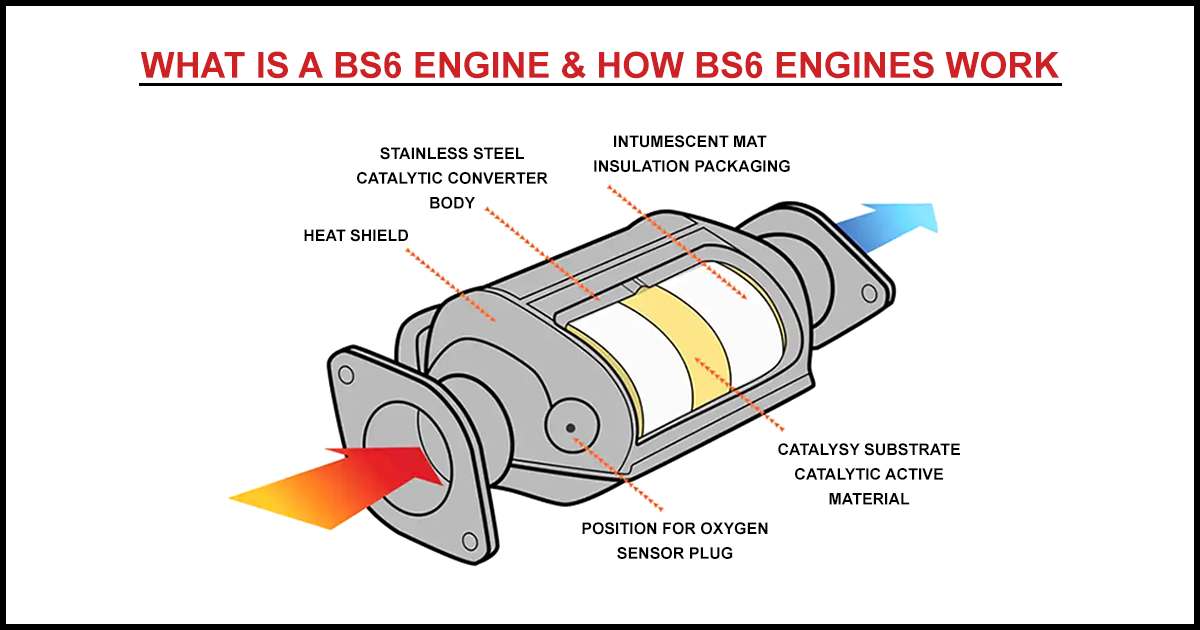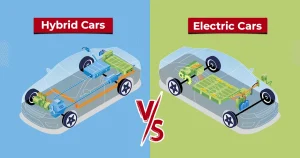With the rising level of pollutants in India’s metropolitan cities, the Central Government has made a decision to strictly guide the automobile industry to change the manufacturing of vehicles suitable for the BS6 Engine emission norms.
One of the major causes of pollution in any country is the use of automobiles. Thus, it is quite clear that India contributes more to pollution via automobiles. Therefore, the CPCB (Central Pollution Control Board) developed BSES (Bharat Stage Emission Standards) laws to curb pollution released by automobiles.
In this article, we will tell you about the BS6 engine, how it works, and the difference between BS4 and BS6.
What is BS6 Engine?
The government of India has made the limitation of emissions mandatory to diminish harmful emissions released by automobiles with the use of internal combustion engine. As part of the “India 2000” initiative, BSES standards were first adopted in 2000. Then, in 2005 and 2010, BS2 and BS3 were introduced correspondingly.
With the enactment of Bharat Stage IV, standards of emission got more stringent (BS4). Following that, the government of India decided to stop enforcing BS5 in 2016 but instead proposed BS6 in 2020.
BS4 (Bharat Stage 4) showed higher hope than its earlier norms by remarkably reducing the atmospheric sulphur levels. However, it still failed in terms of decreasing Particulate Matter (PM) and Nitric Oxide (NOx). The BS6 engine technology, on the other hand, is not only anticipated to decrease the PM and NOx levels dramatically but will also bring down sulphur traces.
How Does the BS6 Engine Works?
How BS6 works? The work of BS6 is mainly based on Selective Catalytic Reduction Units. This is an advanced emissions unit that was created to control emissions. In a BS6 engine, the SCR unit converts NOx into 2 parts, diatomic nitrogen, and water, with the help of diesel exhaust fluid or AdBlue. The diesel fluid contains deionized water and urea.
When AdBlue is connected to the engine, the particular area will be transformed into Ammonia and Carbon Dioxide. Further, the Ammonia converts the gases into water vapor and nitrogen and decreases pollutant emissions from the engine.
More Information about BS6 Engines
The BS6 fuel is now available in many parts of India, and the cost between the BS6 and BS4 fuel is almost zero. However, it is anticipated that once BS6 fuel vehicles are on the road, the oil industry will probably increase the fuel price.
However, some minor differences will be made to the CNG vehicles so that they are agreeing with BS6 engine fuel. With the onset of this specific stage, BS6 vehicles, which are CNG-based, will have a huge impact on the country’s automobile industry.
BS6 engine fuel sulphur levels will be much lower than the previous versions. The sulphur acts as a lubricant that effectively burns. However, there will be some alternatives that will be used to make the grease easier with the deduction of sulphur.
Difference Between BS4 and BS6 Engine
Bharat Stage Emission Standards (BSES) are rules presented by the Indian Government to curb the pollution levels emitted by Internal Combustion Engine, including those of automobiles. These standards are specially designed based on European rules and regulations and thus are numbered BS3, BS4, BS5, and BS6, respectively. The higher the number will be, the more stringent the standards are.
Now let us look at the differences between the BS4 engines and the BS6 engines:
- The concentration of Sulphur in BS6 fuel is fivefold (10ppm) reduced than that of BS4 fuel (50ppm).
- BS6 fuels are considerably cleaner than BS4 fuels because they have less sulphur, which directly results in reduced pollutants and emissions.
- BS6 engine contains compounds that imitate Sulphur’s lubricating features, whereas BS4 uses real sulphur.
- NOx emissions of no more than 60mg/km are needed under BS6 standards (nitrogen oxides). This was 80mg/km with the context of BS4 standards.
- The OD (onboard diagnostic) feature is present in the BS6 engine but not in BS4.
- Correspondingly, the real driving emission will be implemented in BS6 to estimate the pollutant emissions in automobiles in real-time situations. This was not the case in BS4.
- Another significant difference between BS4 and BS6 engine is that BS6-compliant engine mostly utilize BS6 fuel. Also, when a BS6 motor uses BS4 motor fuel, the norms of BS6 will be regarded as broken.
Final Line
With the increasing levels of pollution in India, this move by the Indian government is a new one. Now, it is our commitment to being responsible citizens and using vehicles that comply with the BS6 engine standards. Also, we have to make sure that the pollution emissions from the vehicles are as low as possible.
FAQs
BS6 is the 6th version of the emission standard and has the most stringent and best emission norms.
A BS6 engine has significantly stricter emission norms, resulting in reduced levels of pollutants released into the environment than a BS4 engine.
The key difference between them is the type of fuel they use. BS4 engine produce more harmful emissions and pollutants than BS6.
A BS6 engine gives the option to shift to more environment-friendly and fuel-efficient technology with real-time emission monitoring systems.
Also Read About: Hyundai Exter: Specs, Features, Price, Reviews and Safety




